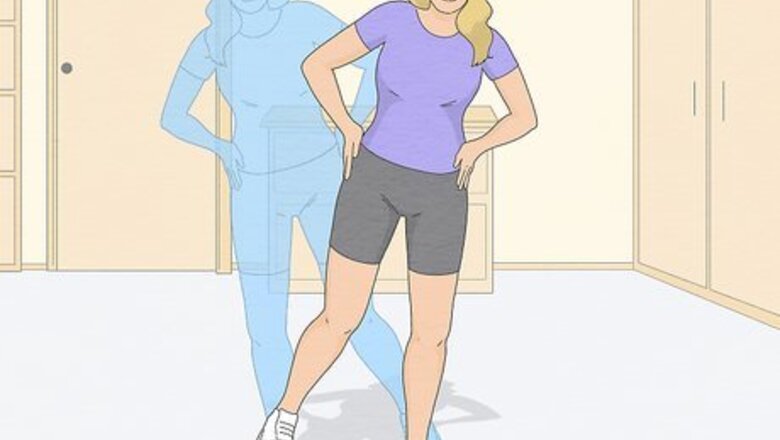
views
Do basic weight shifts.

Weight shifts are a great beginner balance exercise. Stand with your feet about hip-width apart and your weight evenly distributed on both legs. Then, gently shift your weight onto your right side and lift your left foot so it’s just above the floor. Hold the position for as long as you can and then return to the starting position and repeat the movement on your other leg. Try to work your way up to holding for 30 seconds on each side.
Practice walking sideways.
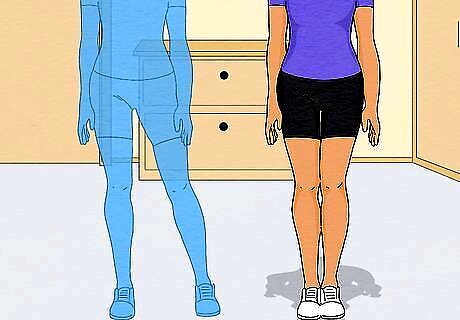
Walking sideways using controlled movements can help with your balance. Stand up tall with your feet together and your knees slightly bent. Slowly take a step sideways (either right or left), moving 1 foot to the side first. Then, move your other foot to join it so they’re both together. Take 10 steps in 1 direction, then take 10 steps back. Try not to drop your hips as you walk.
Try grapevine walking.
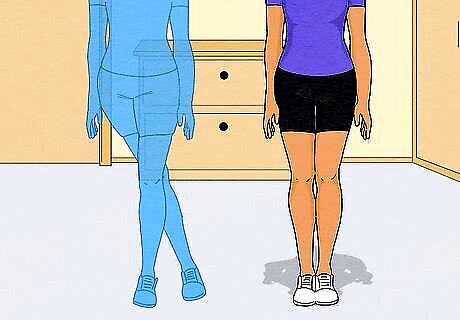
Grapevine walking is similar to sideways walking, but it's a bit more challenging. Stand with your feet together and cross your right foot over your left. Then, bring your left foot to join it so you’re back in the starting position. Work your way across the room in 1 direction and then back in the other, crossing 1 foot over the other to challenge your balance. Shoot for 5 cross-steps on each side. If you need it, you can place your fingers against a wall to help with stability.
Do heel-to-toe walks.
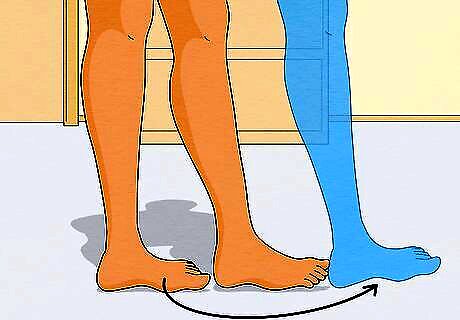
There’s a reason this exercise is used for field sobriety tests. Heel-to-toe walks take a fair amount of balance and control to perform. Start by standing upright, and place your right heel on the floor so it’s directly in front of the big toe on your left foot. Carefully take a step forward, placing your left heel in front of the big toe on your right foot. Shoot for 5 steps and place your fingers against a wall if you need help with stability. As you get better at it, try moving away from the wall.
Stand on 1 leg.
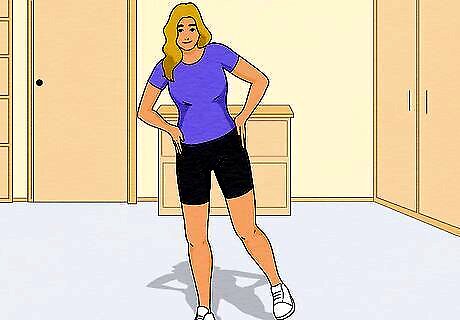
Standing on 1 leg is an easy way to improve your balance, and you can do it anywhere! Raise 1 leg and hold the position for 30 seconds. Then, repeat with your other leg. Try standing on 1 leg while you’re doing things like washing the dishes, brushing your teeth, watching TV, or any other daily activity where you’re standing still. Closing your eyes can make this more challenging. Make sure you're standing next to a wall in case you lose your balance and need to catch yourself. EXPERT TIP Joshua Grahlman, PT, DPT, FAFS Joshua Grahlman, PT, DPT, FAFS Physical Therapist & Entrepreneur Dr. Joshua Grahlman, PT, DPT, FAFS, is the Founder and Chief Athlete Mechanic of Clutch PT + Performance, a private physical therapy clinic specializing in sports and orthopedics in New York City. With more than a decade of experience, Dr. Grahlman specializes in treating acute and chronic pain and injuries, sports performance optimization and post-operative rehabilitation. Dr. Grahlman earned his Doctorate of Physical Therapy (DPT) from Columbia University College of Physicians and Surgeons. He is one of just a few DPTs in New York City recognized as a Fellow in Applied Functional Science through the Gray Institute for Functional Transformation (GIFT). He is certified in Active Release Technique and Spinal Manipulation and is a TRX Suspension Training Specialist. Dr. Grahlman has spent his career treating athletes of all levels, from Ironman Champions and Olympians to marathoner moms. He consults for Triathlete, Men’s Health, My Fitness Pal and CBS News. Joshua Grahlman, PT, DPT, FAFS Joshua Grahlman, PT, DPT, FAFS Physical Therapist & Entrepreneur Single leg stance is one of the best things you can do to improve your balance. You can also try tandem stance, which involves standing with one foot in front of the other, heel to toe. Exercises like these train your control and stability.
Do a dumbbell balance exercise.
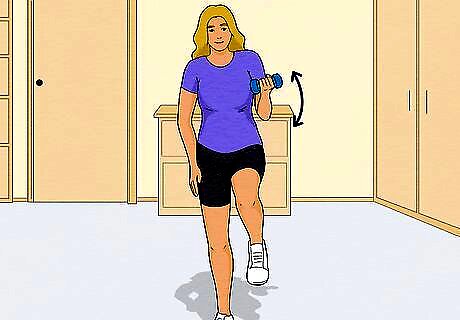
Dumbbells can make standing on one leg more challenging (and effective). Stand with your feet about hip-width apart and your weight evenly distributed so you’re nice and stable. Pick up a dumbbell with your left hand and hold it so your palm is facing upward and your elbow is bent at a 90-degree angle. Lift your right leg off of the floor and bend it back at the knee. Hold the position for as long as you can and return to the starting position. Then, switch hands with the dumbbell and repeat the movement on the other side. Start with a relatively light weight. Somewhere in the 5–10 lb (2.3–4.5 kg) range should be good. You can work your way up to heavier weights over time. Aim for about 30 seconds on each side. If you want to make it even more challenging, try balancing on the opposite leg as the weight. For instance, you could hold the dumbbell in your left hand and raise your left leg so you’re balancing on your right leg.
Do squats.
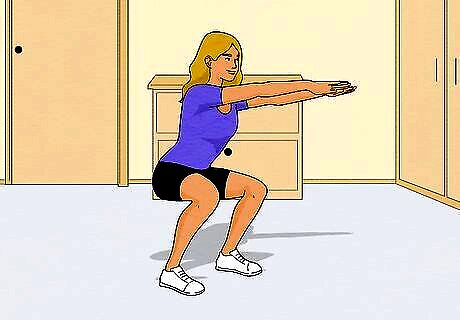
Building your glutes, quads, and hamstrings can help with your balance. Strong legs can help improve your balance and prevent falls. Squats are a super effective and super simple way to strengthen your legs. Stand with your feet about hip-width apart, bend your knees and hips, and slowly lower yourself like you’re sitting in a chair behind you. Keep your arms straight out in front of you and keep your back straight. When your thighs are parallel to the floor, stand back up. That’s 1 rep. Shoot for 3 sets of 10 reps, and rest for 1 minute between each set.
Try balancing on a wobble board.
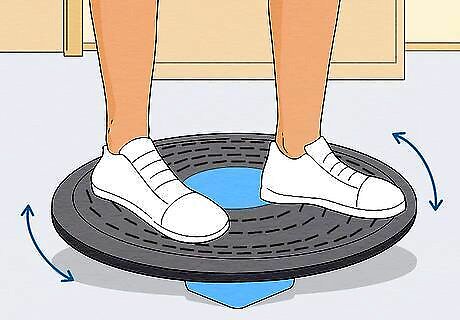
Using the wobble board at your gym is a great way to work on your balance. A wobble board is a piece of gym equipment that gives you an unstable surface to practice balancing. Stand on the board with your feet shoulder-width apart. Carefully rock forward, back, and side to side for 1 minute at a time. If you need support, hold onto a chair or a stable object. Try working your way up to 2 minutes at a time. You could buy your own wobble board to practice balancing on it at home.
Practice tai chi.
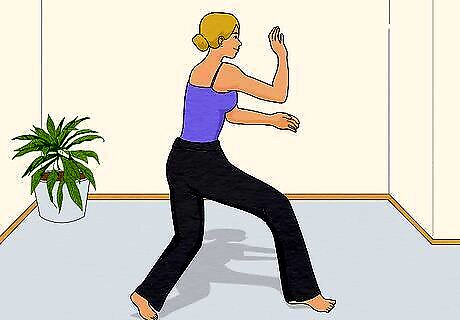
Tai chi can really help improve your balance. Tai chi is an ancient Chinese movement practice that’s been described as “meditation in motion.” It uses a series of movements and poses that will challenge and improve your balance. Look online for tai chi classes in your area that you can join. You can also use videos or books to practice by yourself. Working with an instructor in a group class can help make sure you’re doing the techniques properly.
Take dance classes.

Dancing is a fun way to improve your balance and get in a great workout. Research has shown that ballet dancers use more muscle groups to balance, even when just walking across a room. Dance training can strengthen your nervous system’s ability to coordinate your muscles and improve your balance. Look for some dance classes in your area that you can sign up for. You’ll learn some fancy new moves and strengthen your balancing muscles. You don't have to do ballet! You can try other styles of dance, like hip-hop or salsa.
Work balance exercises into your daily routine.
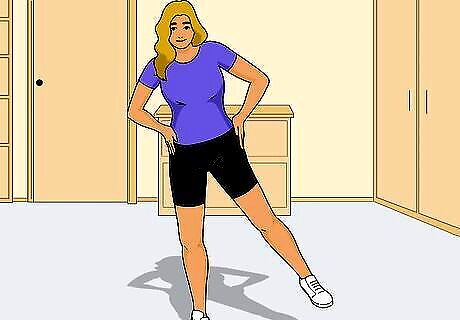
Doing balance exercises consistently is the best way to see results. You don’t need a ton of fancy equipment. In fact, you don’t need any equipment at all! Try finding ways to add balancing exercises to your daily life. Try standing on 1 leg, walking sideways across a room, or busting out a few squats before you get back to what you were doing. The more you practice improving your balance, the better it’ll become.
Get at least 7 hours of sleep each night.

Being tired can actually worsen your balance. Research shows that sleep deprivation is directly related to accidental falls. Keep your mind sharp and your body rested by getting at least 7 hours of restful sleep every night.




















Comments
0 comment